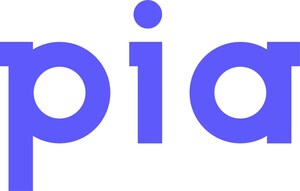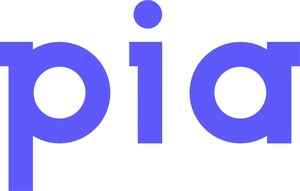Private Internet Access challenges the VPN industry to raise the bar on accessibility
Private Internet Access marks Global Accessibility Awareness Day by sharing their expert insight on making cybersecurity more accessible and committing to greater heights.
DENVER, Colo. , May 18, 2023 /PRNewswire/ -- Virtual private network (VPN) provider Private Internet Access (PIA) has been built upon a commitment to protecting people's right to online privacy and to championing digital freedom for all.
This means putting accessibility requirements at the forefront of PIA's product requirements, and working towards greater accessibility where possible. They have had the opportunity to engage with members of their community with accessibility requirements, and have worked with them to significantly improve accessibility for the PIA app.
Today, Global Accessibility Awareness Day, PIA published their Commitment to Accessibility, marking a new milestone in their accessibility journey.
Jose Blaya, Director of Engineering at Private Internet Access, said:
"Private Internet Access is committed to protecting people's right to online privacy and digital freedom. Working towards a world in which everyone has access and can benefit from that is extremely important. We're therefore excited to be able to share the process we went through to develop Private Internet Access' accessibility features. As an engineering team we want to continue to address the needs of our customers and making accessibility a key consideration is an important part of that."
PIA's Accessibility Journey
PIA's story of how they went about improving their VPN's desktop accessibility began when they were contacted by an existing customer who was completely blind. They had been using Private Internet Access but were struggling to use the VPN fully as their screen-reader wasn't working correctly with it. They were having issues such as being unable to fully move around the app to access the different configuration options. The customer provided a huge amount of feedback to the PIA team, who were determined to address some of these issues. They set to work to improve PIA's accessibility.
PIA used a cross-platform development framework to develop its apps, which provided toolkits for distributing your app across multiple platforms such as Windows, Mac and Linux. It allows you to write one set of code, a lot of which can then be shared across the different platforms. To improve the PIA app's compatibility with screen-readers, and to really ensure the accessibility features were working as they should, the PIA team would need to look into each operating system's specific accessibility API.
The first step was to expose the functionality of each platform's accessibility APIs. Then, step by step, the team went through the process of making each element accessible. After each attempt, they were able to share the changes with the user who was blind, who provided them with immediate feedback. This enabled the team to really focus in and fine-tune PIA's accessibility, ultimately bringing it to a very high level such that a user who was completely blind would be able to use PIA's VPN as easily as possible.
How PIA delivers accessibility
The most important things to consider when making an app accessible are keyboard compatibility and ensuring text information is understandable without the visual context.
PIA is a graphical user interface (GUI) application which means that it is designed using graphical elements such as windows, menus, dialog boxes, and buttons. In order for the accessibility features to work properly, the UI elements must be accessible to screen readers virtually, and be able to be navigated via the keyboard.
Image: PIA's engineering team's notes on accessibility considerations when adding a new UI feature.
By isolating each graphical UI element and providing text alternatives for them, it enables the keyboard to skip around the different elements and for the screen-reader to say which element it is landing on.
Image: PIA's engineering team's notes on key things to consider for keyboard navigation.
The high level of customization that is possible with PIA's VPN is one of its standout features, allowing users to configure custom DNS settings, port forwarding, remote ports and proxies. To make these features accessible, a non-visual way to indicate those choices needs to be added, which can then overlay the graphical UI.
How different elements and options are grouped together is important. With a graphical UI, the way things are grouped is inherent in the way things are positioned on screen. With a screen-reader you don't have that by default, so the grouping needs to be made explicit. There are no visual cues so naming groups and sub-groups along with any other elements is very important.
Image: PIA's engineering team's notes on addressing issues with multiple displays in Mac OS.
Once each of the UI elements within PIA's app framework had been interrogated in this way, annotated and grouped in the most effective way, the accessible version of the app was in a very good place, able to work seamlessly with screen-readers and allowing easy keyboard navigation.
Staff Software Engineer at Private Internet Access, John Mair, was part of the team who worked on PIA's accessibility features including improved compatibility with screen-readers. John said:
"When considering an application's accessibility, it is useful to think of the application as a universe with multiple layers. There are the elements you would normally see within an app - dropdown menus, images, tables - and then there are the hidden versions of these that you need to make visible to the screen-reader and accessible via keyboard input.
Working on PIA's accessibility was an incredibly interesting process. Hearing the concerns of the existing user, exploring the adaptations that were possible and seeing the impact that these had, was very engaging. This was especially the case given the input we received from the user and the detailed feedback they were able to provide. It has taught us to make sure that whenever we are implementing a new feature or change, we also need to understand the impact this will have from an accessibility perspective. This is something that we want to take forward in the future."
What's next for PIA and accessibility
Private Internet Access is committed to continuing to improve its user experience for all customers, and will publish a Commitment to Accessibility acknowledging the need to continue to improve accessibility across all channels and setting out their intentions going forward. Their Commitment to Accessibility can be found on the PIA website from 18 May 2023: https://www.privateinternetaccess.com/blog/commitment-to-accessibility/
In addition to continuing to adapt and improve accessibility within their VPN product, PIA will work towards compliance with W3C's Web Content Accessibility Guideline for their website. In doing so they aim to improve their user experience for all users, and align their website with their VPN app in terms of accessibility.
SOURCE PIA

WANT YOUR COMPANY'S NEWS FEATURED ON PRNEWSWIRE.COM?
Newsrooms &
Influencers
Digital Media
Outlets
Journalists
Opted In





Share this article